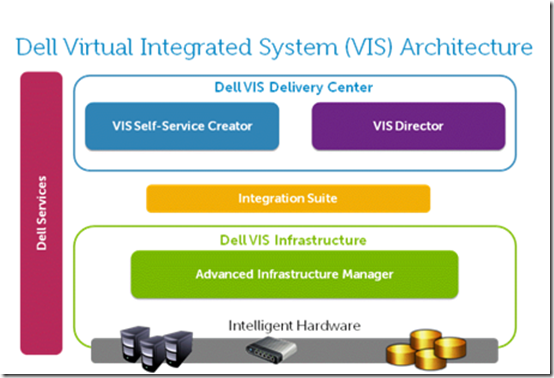Virtualization has brought an amazing number of improvements to the datacenter and it has changed the way things get done in IT. It delivered the ability to deploy easily from a template or golden copy, move a workload around and add a layer of HA to the environment. Unfortunately it also introduces a number of additional challenges. It created new (and often multiple) ways to store data, new licensing challenges, new ways to back things up, new virus scanning policies, new ways to do high availability, VM sprawl, etc. While the benefits of virtualization are widely appreciated, they’re often limited to the non mission critical virtual environments. You need those benefits on the non-virtualized servers too.
We have heard that many of you are looking to move toward a cloud-like infrastructure that further enhances our flexibility and savings. As you continue down the next-generation datacenter path there are two mindsets in the industry – one that skews towards proprietary and ‘Islands of Efficiency’, and Dell’s, which is more encompassing and gives customers the infrastructure to extend investments.
To further extend Dell’s approach, today Dell announced new products to help customers in this journey: the availability of the VIS Self-Service Creator as well as an update to Dell AIM and VIS Director to monitor and help you manage the infrastructure. This is all part of our continuing strategy to bring you a true, next generation infrastructure. We call it VIS.
What is VIS?
It stands for Virtual Integrated System, but don’t let the name mislead you, it’s not limited to a virtual environment and much of the value here is for physical environments. VIS is a fully open architecture supporting a heterogeneous ecosystem of servers, storage, networking, and hypervisors – From Dell or other vendors.

We believe there’s no reason to throw out your current datacenter for a vision of a future one. Nor is there any reason to limit yourself to blades or one hardware provider. VIS is about people, process and of course technology and how one enables the other. Let’s break it down piece by pieces and see what we have.
VIS Self-Service Creator
What makes Self-Service Creator, and more broadly VIS unique is not only the new technology but rather the approach to solving the problem. We’ve had technology that could provision new environments for years but it’s about tying the people, process AND technology together that makes this work.
Everyone loves DIY. There are lots of examples here, from the success of home improvement stores, online travel arrangements and even ATM’s and self-service banking. The web’s enabled everyone to do just about anything for themselves. Anything that is except get the resources they need from IT quickly. Regardless of which side of the conversation you’re on, requesting and fulfilling resource requests for/from IT is usually not easy or efficient. VIS Self-Service Creator is designed for both the end user and the IT team.
Is this YAPT (Yet Another Provisioning Tool?)
No! This is about streamlining and automating the processes and reducing the time for the repeated, daily tasks that keep you from getting to the bigger, more impactful projects.
Virtualization environments are becoming more heterogeneous and having a single source image for each (plus one for physical) can easily be 3 times the work and 3 separate processes. Self-Service Creator gives IT the ability to deploy with one workflow, one request process and one approval process, regardless of the destination. Additionally it gives IT the governance to decide who and what can be provisioned and set limits on when it expires. Yes, you can even set those environments to expire!
This gives IT the ability to automate the process and let users request what they need while IT maintains approval and control. You can assign a cost to the environment, let the owners manage it directly and even reclaim old/unused VM’s.
Dell AIM – The Advanced Infrastructure Manager (and what’s new in version 3.3)
AIM is industry-leading technology. It is bringing much of what you love about virtualization to the physical environment, in addition to managing virtual environments. This means portability of your workload. Simply reboot the environment with the resources you want, regardless of the size of the physical or virtual environment. We are also making available some other functionality with AIM including a plug-in to VMWare’s popular vCenter so you can manage all of this from one console. Additionally we are also releasing 10G Ethernet and FCoE support. The rapid adaption of these technologies into AIM shows the commitment to keeping up with the changing landscape and throws another log onto Dell’s fire for standards.
Stay tuned and I’ll give some details around VIS Director soon.
You can also join the conversation and meet the VIS team at the Dell Tech Center.